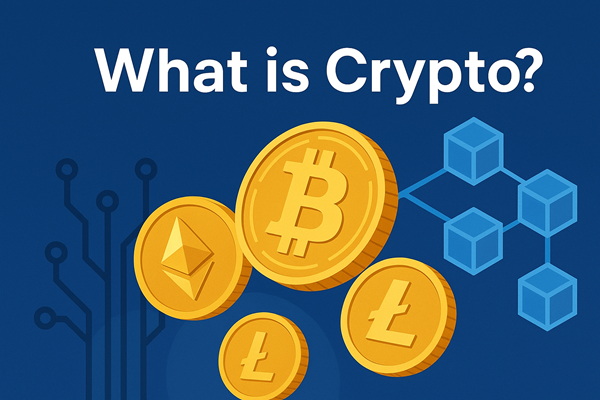Best Crypto Wallet for Staking vs Trading in 2026
Best Wallet for Staking vs Trading 2026 – best crypto wallet 2026, staking wallet, trading wallet, crypto staking vs trading, best wallets for crypto.
Introduction
The cryptocurrency market is evolving rapidly, and as we enter 2026, crypto investors are facing a crucial decision: Should you choose a wallet that excels at staking or one designed for active trading? Staking is becoming a popular way to generate passive income by locking assets into proof-of-stake (PoS) networks, while trading continues to attract users who want quick profits through frequent buying and selling. Each activity demands different wallet features: staking requires enhanced security, reward automation, and multi-chain compatibility, whereas trading demands fast transactions, exchange integrations, and lower fees. This comprehensive guide explores the best crypto wallets for staking versus trading in 2026, helping you choose the most suitable option based on your goals, risk tolerance, and investment style. Whether you’re a seasoned investor or just starting your crypto journey, selecting the right wallet can significantly impact your profitability and security.
Current Market Overview
The crypto wallet industry in 2026 has become more sophisticated than ever before. With over 400 million active wallet users globally, the demand for both staking and trading functionalities is at an all-time high. Over 60% of new wallets now include built-in staking features, while trading-focused wallets integrate seamlessly with decentralized exchanges (DEXs) and centralized exchanges (CEXs).
Staking wallets cater to users who prefer holding their crypto for extended periods while earning staking rewards. These wallets prioritize security, long-term storage, and validator support. Trading wallets, on the other hand, focus on speed, liquidity, and ease of access for day traders and swing traders who frequently buy and sell digital assets.
Regulatory advancements, such as clearer guidelines on staking rewards taxation and exchange reporting, have also influenced wallet development. Many wallets now offer tax tracking and AI-powered portfolio management tools.
Key Features of a Staking Wallet
A staking wallet in 2026 must include:
- Staking Support: Support for multiple proof-of-stake (PoS) and delegated proof-of-stake (DPoS) coins like ETH, ADA, SOL, and DOT.
- Rewards Automation: Features like auto-compounding and automatic reward claiming.
- Enhanced Security: Hardware wallets or hybrid models are preferred for minimizing online risks.
- Low Commission Fees: Minimal validator or staking platform fees to maximize returns.
- Cross-chain Staking: Ability to stake various tokens from different networks in one place.
- Validator Transparency: Clear information on staking partners, APR, and lock-in periods.
Key Features of a Trading Wallet
A trading wallet in 2026 should provide:
- Instant Access: Availability on mobile and web platforms for quick trading.
- Exchange Integration: Built-in access to DEXs and CEXs with fast swap options.
- High Transaction Speed: Optimized for frequent trades and arbitrage opportunities.
- Low Transfer Fees: Efficient gas and network fee management.
- Built-in Analytics: Price alerts, advanced charts, trading bots, and real-time
- Multi-chain Trading: Ability to trade tokens across Ethereum, Binance Smart Chain, Polygon, and more. portfolio tracking.
Best Crypto Wallets for Staking in 2026
- Ledger Nano X / Ledger Stax: Premium hardware wallets with multi-chain staking support, excellent for ETH 2.0, Solana, and Polkadot.
- Trezor Model T: Advanced hardware wallet offering staking integration through partner platforms with hardware-level encryption.
- Trust Wallet: Popular mobile wallet supporting staking for over 30 tokens with an easy-to-use interface.
- Keystone Wallet: High-security cold storage solution offering multi-chain staking with offline signing.
- Exodus Wallet: Desktop and mobile app with integrated staking, suitable for intermediate users.
Best Crypto Wallets for Trading in 2026
- MetaMask: The most widely used Web3 wallet with DEX integration, supports layer-2 trading.
- Coinbase Wallet: Beginner-friendly wallet with fiat on-ramp, exchange access, and staking options.
- Binance Wallet: Ideal for frequent traders seeking fast execution and lower fees.
- Exodus Wallet: Built-in exchange and portfolio tracker make it a strong choice for traders.
- Crypto.com DeFi Wallet: Combines trading flexibility with competitive fees.
Expert & AI Predictions for 2026 and Beyond
Experts and AI-driven forecasts predict the following trends:
- Hybrid wallets will dominate: More wallets will combine staking and trading functionalities.
- AI-powered arbitrage and staking optimizers: Bots will manage staking rewards and suggest profitable trades.
- Regulated staking with insurance: Platforms will offer insured staking rewards for safer passive income.
- Gas fee reduction mechanisms: Trading wallets will use AI to route transactions for lowest costs.
FAQs
- What is the main difference between staking and trading wallets?
Ans.: Staking wallets help you earn passive rewards by locking your crypto, while trading wallets enable fast transactions and market access. - Can one wallet do both staking and trading?
Ans.: Yes, many modern wallets such as Ledger and Coinbase Wallet now offer both features. - Which wallet is safest for staking in 2026?
Ans.: Hardware wallets like Ledger Nano X or Trezor Model T are the safest for staking. - Which wallet is best for beginners trading crypto?
Ans.: Coinbase Wallet and MetaMask are user-friendly for new traders. - Do staking wallets earn passive income automatically?
Ans.: Most staking wallets offer automatic reward claiming and auto-compounding. - Can I move my staked coins to a trading wallet anytime?
Ans.: Yes, once the staking lock-up period ends, you can transfer them to a trading wallet. - Is it possible to stake while trading on the same platform?
Ans.: Some hybrid wallets allow both activities simultaneously. - Do trading wallets have higher fees than staking wallets?
Ans.: Trading wallets may incur more network and gas fees due to frequent transactions. - Which wallets support ETH staking and trading together?
Ans.: MetaMask, Ledger, Trust Wallet, and Coinbase Wallet support both. - Will AI improve wallet performance in 2026?
Ans.: Yes, AI is being used to enhance both staking efficiency and trading strategies.
Who Should Use a Staking Wallet?
- Long-term investors looking for passive income.
- Holders of proof-of-stake cryptocurrencies.
- Users with a low-risk appetite.
- Individuals aiming for compounding rewards.
Who Should Use a Trading Wallet?
- Day traders and swing traders.
- High-frequency traders seeking low latency.
- Users who require liquidity over long-term storage.
- Crypto arbitrage traders.
Why Choose Us?
At coin-predictions.com, we provide unbiased crypto insights, AI-driven forecasts, and expert wallet recommendations. Whether you aim to earn staking rewards or maximize trading profits, our guides help you stay ahead in the crypto market.
Final Words
So, which is the best crypto wallet for staking vs trading in 2026? The answer depends on your investment goals. For passive income seekers, staking wallets like Ledger Nano X or Trust Wallet are ideal. For active traders, wallets like MetaMask and Binance Wallet provide speed and integration. Many investors choose a hybrid strategy: keep long-term holdings staked while using a separate wallet for trading.
Secure your crypto future today with expert insights from coin-predictions.com.


